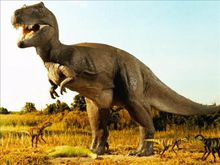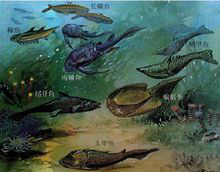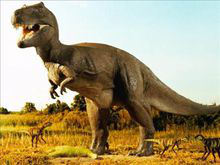

Xuzhou Han Culture Academic
Submit
【XU BO】Maximum daily capacity: 10,000 person-times Instantaneous capacity: 2,500 person-times


Activity time:2018/2/6 10:30:00
Activity location:Lecture Hall of Xuzhou Museum
Age requirement:3-8 years old
Introduction:
"Prehistoric Earth"-Collection Activity of Xuzhou Children's Creative Painting
Activity theme
What was the Earth like before humankind appeared? Are there any animals or plants we haven't seen living on Earth? Paint the "prehistoric earth" with your imagination!
Age range
3-8 years old
Painting types and specifications
There are no restrictions on the type of painting. The size of the painting should not exceed A4 size. Please don't frame your painting.
Prize settings:
Several outstanding organization awards, 5 first prizes, 10 second prizes, 20 third prizes, several outstanding prizes
Submission method
1. The work must be completed independently by the child or under the guidance of the parent and the instructor. The original work of the contestant must be the principle. Parents or teachers must not write on their behalf.
2. Register the entry information on the back (bottom right) of the painting: the work name, name, age, and telephone number. Incomplete information will not be awarded.
3. Please submit the original work to the Social Service Department of Xuzhou Museum, 118 Heping Road, Xuzhou
4. Delivery time: 9: 00-16: 00 every Tuesday to Sunday
5. Entries will not be returned
6. The Organizing Committee has the relevant rights to the work, including but not limited to publishing, exhibition, website, self-media, etc. Without the consent of the contestants, the contestants have the right to sign.
7. The right to interpret this event is owned by the event organizer.
Deadline
February 6, 2018
Award ceremony
1, Award time: February 10, 2018 at 10:30 am
2, Awarding place: The opening ceremony of the “Liaoxi Palaeontological Fossil Exhibition” on the first floor of the exhibition hall of Xuzhou Museum
3. Award unit: Xuzhou Young Artists Association
Background knowledge
The emergence of creatures

Dickenson's mother fossil was found in Mount Edicaa, Australia
Paleobiologists have discovered the Earth ’s ancient biological history dating to 635 million years ago. The earliest creatures on Earth have a lifestyle very similar to today's sponges, rooted on the deep ocean and filtering food particles in water.
Plutonium fossils record the earliest occurrence of life on the earth about 3.5 billion years ago, but how life on earth appeared is still one of the unsolved mysteries in the scientific community.
Invertebrate dominance period (510-438 million years ago)

Ordovician species
The Ordovician began 500 million years ago, with the highest number of trilobites. Common species include corals, brachiopods, gastropods, sea lilies, and nautilus. Some groups have been further developed, such as pen stones, corals, brachiopods, sea lilies, mosses and mollusks.
Silurian and Devonian (439-363 million years ago)
After a long evolution, the earth finally entered a period dominated by vertebrates. Fish became the overlord of the time. 367 million years ago, huge meteors cut through the night sky and fell into the sea, and the sky was shining with light. At this time the global climate is drying up and the temperature is falling. The amount of oxygen in the ocean has dropped to very low levels. As a result, many marine life, including reef-building animals, a variety of fish and brachiopods, have become extinct.
The rainforest is the most prosperous place, and insects make up one third of the total weight of animals and plants. The sturdy exoskeleton protects small animals from harm and prevents them from drying out during drought and rain. It took 40 million years for plants and insects to create good conditions for amphibians before amphibians climbed from the water to the shore, where plants and herbivores provided sufficient food. As no larger animal competed with it, amphibians spread rapidly.
Ocher Carboniferous and Permian (about 363-251 million years ago)
During the Carboniferous Period, the climate was humid, and new and strange forests appeared. This was the earliest forest on land. These forests are not as dense and dark as the swamp forests of today. They are made of equavers, thick layers of ferns, and tall and thin trees.
Sting insects are the first animals to master flying techniques. Reptiles, birds, mammals and even fish all flew into the sky after them. Flying greatly facilitates avoiding predators, conquering new territories and finding new sources of food.
Evolution of reptiles (about 250-205 million years ago)
Reptiles include large carnivorous animals, lightweight predators, scaled armor, herbivorous animals with mouths like pigs, and fish-eating animals like crocodiles. They lived with the earliest dinosaurs. Many reptiles are larger and more common than the earliest dinosaurs, but these reptiles and dinosaurs are much larger than the earliest mammals; mammals that emerged during this period were not larger than rats.
The heyday of the dinosaur (about 208-146 million years ago)

Tyrannosaurus
The Jurassic was the heyday of dinosaurs. In addition to dinosaurs on the land and ichthyosaurs in the water, pterosaurs and birds also appeared. In this way, for the first time, vertebrates have occupied three major ecological areas: land, sea and air. At the same time, the single continent on the earth was broken down into two continents, and the plants and climate became more diverse. But the earth is still warm and there are no grasses or flowering plants.
The last prosperity of dinosaurs (about 146 million-65 million years ago)
By the end of the Cretaceous, all the dinosaurs, as well as ichthyosaurs and pterosaurs, had been reduced due to abrupt environmental changes. At this point, the reptiles who had dominated the country have fallen into a state of stagnation, withdrew from the stage of history, and the earth's landscape changed dramatically. After the sea reached record heights, the shapes of the continents were very similar to today. Flowering plants appeared, and many insects-from bees to ants-also appeared. Giant lizards swim in the ocean with giant turtles. In the air, pterosaurs spread their wings up to 12 meters. On land, dinosaurs dominate, and their size and shape exceed all previous types.